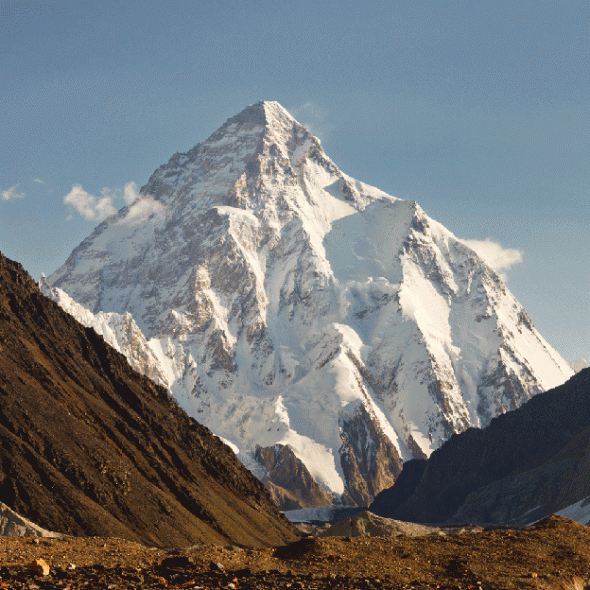
In the year 1953, Bob Craig, Dee Molenaar, Pete Schoening, George Bell, Art Gilkey, Charlie Houston, Tony Streather and Bob Bates attempted a new route on K2. Craig played a large role in the expedition, and the heroic rescue attempt of his partners.
On January 16th 2015, Bob Craig passed away at the age of 90. Originally published in Alpinist magazine, Craig tells the story of a rescue attempt that has become a legendary part of mountaineering history.
This route became the Abbruzi Ridge, when an Italian team completed it the following year.
Going back to August 10th 1953, Craig and his team were at their camp VIII, and running low on food and fuel after 10 days at 7600m. All team members were cold and dehydrated. Art Gilkey was unable to walk and close to death, due to phlebitis in both legs.
At this time, not much was known about the effects of altitude on the body, and so little could be done to improve their situation, but attempt to descend down their escape route. With Art’s severe condition, lowering him down thousands of meters of varied and steep terrain was a significant undertaking.
Art was wrapped in a sleeping bag, leaving his arms free to hold an ice axe. Pete, Dee and Bob Craig made their way down towards a cliff that would allow them to lower Art to camp VII.
I then belayed Pete and Dee down the sixty- to seventy-foot drop. George, who had badly frostbitten feet, took over lowering Art and me to what appeared to be the next belay stance, where Pete and Dee were setting up. Unroped (I can’t remember why—probably I was hypoxic), I held on to the rope secured to Art. Halfway down, the rope cut through a section of wind slab. Art and I were engulfed in layers of loose and hard-packed snow. The belay held, and Art seemed undisturbed. His face was gray, but cheerful. I felt exhausted and breathless. The avalanche had nearly pulled me off. Snow plugged my mouth and nostrils. – Bob Craig
Once Bob had reached camp VII, he started erecting the tents. After an hour, one of the two tents were ready, and Bob Craig traversed back to check on the rest of his team. They were all gone.
A minute or so later, a figure appeared from below. It was Tony. He was soon followed by Dee. Even at a distance, they looked desperate. “What happened?” I called out to Tony. “Somebody slipped, and we were all pulled off,” he responded. “Pete saved us, but it is not at all good. Some of the chaps are hurt.”
After anchoring Art by plunging his axe deep into the neve, Bob returned to camp VII to take care of the others. After 40 minutes spent settling the injured team members in their tents, Craig roped up with Tony and Bob Bates to rescue Art.
The traverse wasn’t all that technical, but we didn’t dare have an additional accident. As we crested the rise in the fading light, there was no sign of Art, no rope, no ice axes. Just emptiness and howling wind. The only indication of what had happened was a groove in the snow, the trace of an avalanche that had come down with enough force to uproot the anchors and carry Art down the mountain.
Bob Craig ends his account with a statement that could only be attributed to his strength as a leader, and the additional strength that he found due to the bond with his friends.
Yet, I should note that while luck was undoubtedly a great factor, I believe the underlying reason we survived those four days, each of us in some way frostbitten or injured, descending through verglas-coated slabs and sections of blue ice, past a ledge coated with Art’s blood, was that we’d all become special friends on that mountain.
As any mountaineer knows, reaching the summit only marks the halfway point of any route, and often the descent is technically more challenging, especially with frostbitten fingers. This legendary story of the descent and rescue of his team shows how true mountaineering spirit, mental strength and willpower, allows us to go beyond our normal physical limits, achieving what must be done to survive.
Bob Craig’s original account is available for reading at: www.aplinist.com

